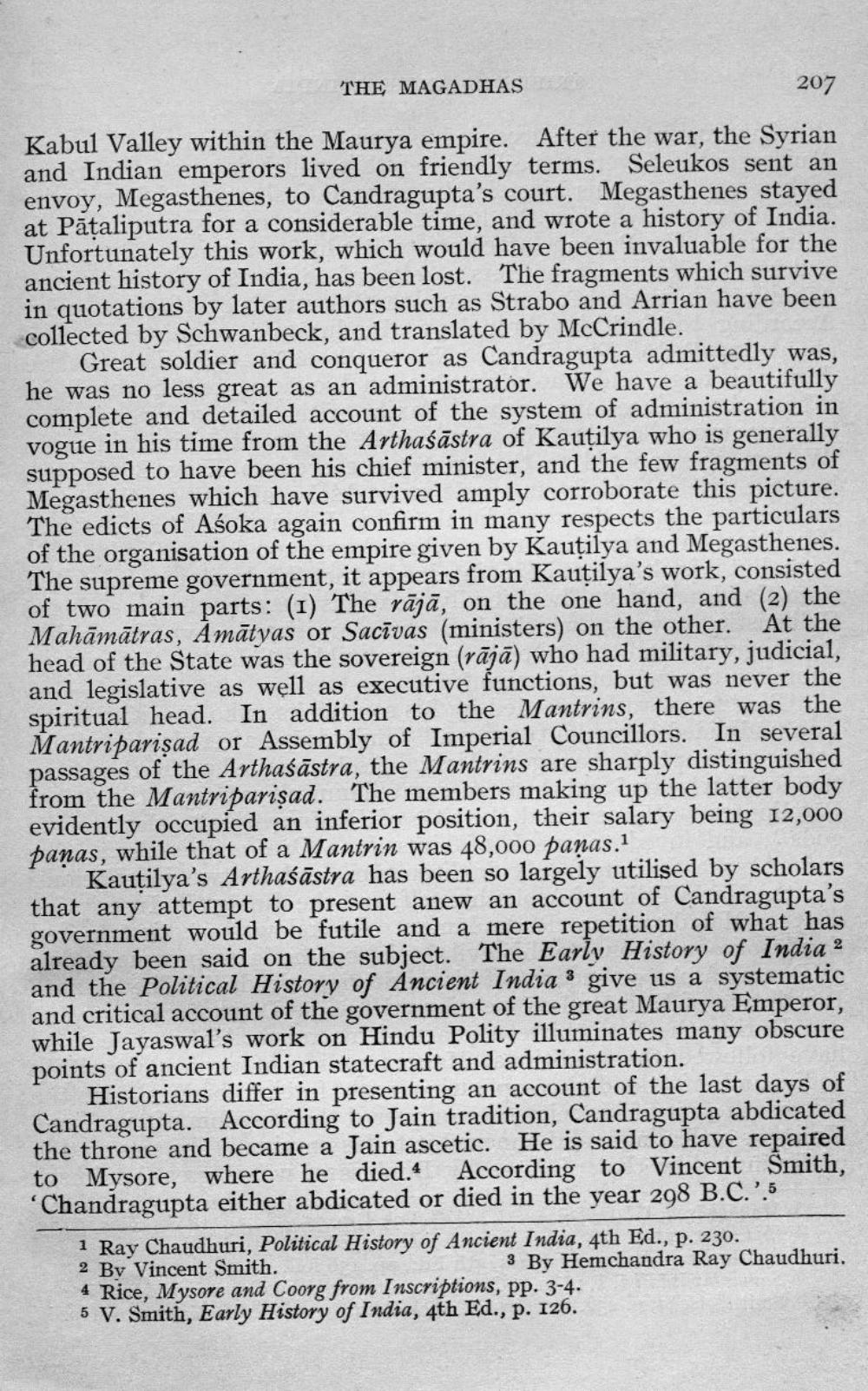________________
THE MAGADHAS
207
Kabul Valley within the Maurya empire. After the war, the Syrian and Indian emperors lived on friendly terms. Seleukos sent an envoy, Megasthenes, to Candragupta's court. Megasthenes stayed at Pāțaliputra for a considerable time, and wrote a history of India. Unfortunately this work, which would have been invaluable for the ancient history of India, has been lost. The fragments which survive in quotations by later authors such as Strabo and Arrian have been collected by Schwanbeck, and translated by McCrindle.
Great soldier and conqueror as Candragupta admittedly was, he was no less great as an administrator. We have a beautifully complete and detailed account of the system of administration in vogue in his time from the Arthaśāstra of Kautilya who is generally supposed to have been his chief minister, and the few fragments of Megasthenes which have survived amply corroborate this picture. The edicts of Asoka again confirm in many respects the particulars of the organisation of the empire given by Kauțilya and Megasthenes. The supreme government, it appears from Kautilya's work, consisted of two main parts: (1) The rājā, on the one hand, and (2) the Mahāmātras, Amātyas or Sacīvas (ministers) on the other. At the head of the State was the sovereign (rājā) who had military, judicial, and legislative as well as executive functions, but was never the spiritual head. In addition to the Mantrins, there was the Mantriparişad or Assembly of Imperial Councillors. In several passages of the Arthaśāstra, the Mantrins are sharply distinguished from the Mantriparişad. The members making up the latter body evidently occupied an inferior position, their salary being 12,000 panas, while that of a Mantrin was 48,000 panas.
Kautilya's Arthaśāstra has been so largely utilised by scholars that any attempt to present anew an account of Candragupta's government would be futile and a mere repetition of what has already been said on the subject. The Early History of India 2 and the Political History of Ancient India : give us a systematic and critical account of the government of the great Maurya Emperor, while Jayaswal's work on Hindu Polity illuminates many obscure points of ancient Indian statecraft and administration.
Historians differ in presenting an account of the last days of Candragupta. According to Jain tradition, Candragupta abdicated the throne and became a Jain ascetic. He is said to have repaired to Mysore, where he died.4 According to Vincent Smith, 'Chandragupta either abdicated or died in the year 298 B.C.'.5
1 Ray Chaudhuri, Political History of Ancient India, 4th Ed., p. 230. 2 By Vincent Smith.
3 By Hemchandra Ray Chaudhuri. 4 Rice, Mysore and Coorg from Inscriptions, pp. 3-4. 5 V. Smith, Early History of India, 4th Ed., p. 126.




